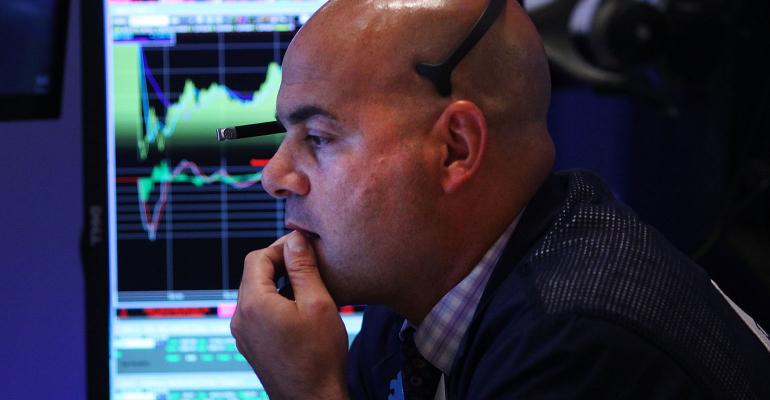By Sarah Ponczek
(Bloomberg) --It’s an investing cliche: don’t panic. Wall Street strategists didn’t, and their imperturbability is looking smarter by the day.
Amid the sound and fury of the U.S. stock market’s first 10 percent correction in two years, nary a peep was heard from forecasters. Not a single year-end forecast budged. Instead, calls to “ buy the dip” grew louder. And one strategist even increased his estimate for 2018.
It’s a good showing for a group whose collective wisdom has drawn occasional ridicule -- these are forecasters who since 1999 have never once predicted a down year for the S&P 500 Index. It’s also testament to how deeply the conditioning of past selloffs has gone. When markets staged a similar correction two years ago, strategists were much faster to revise their predictions.
This time they held firm. Nothing fundamentally had changed -- that was the mantra. It’s a short-term correction, not the start of a bear market, they said. And now, with the rally back on track after last week’s 4.3 percent rebound, it seems they were right.
“There’s been days of celebration and then a questioning, and a reckoning, and now a recovery -- it’s just too much drama,” said John Stoltzfus, the chief investment strategist of Oppenheimer & Co., who kept his year-end forecast for the S&P 500 unchanged at 3,000 through the tumult. “It sounds boring almost to say, but no deterioration in fundamentals indicated not much change.”

It bears repeating: Not one Wall Street strategist cut his or her estimate as markets went awry. In fact, the average forecast for the S&P 500 at year’s end increased to 2,940, as Chris Harvey, head of equity trading at Wells Fargo, upped his view, according to data compiled by Bloomberg.
In a note on Feb. 7, Harvey told clients the worst was over and that the pullback made it easier for investors to appreciate strong corporate earnings growth, boosting his year-end target for the S&P 500 to 2,950 from 2,863. From its intraday low two days later, the S&P 500 is up 6.7 percent.
“Recently, we’ve been telling clients to slowly and methodically invest their cash as the selloff unfolded. Now, we’re telling clients that they’re free to trade,” he wrote in the report. “Get in motion.”
The market rout was a short-term event driven by a blowup in volatility-linked products, rather than just a rates induced scare, strategists including Binky Chadha, Deutsche Bank AG’s chief global strategist, said. Underlying fundamentals remained strong, suggesting the market would soon resume its upward trajectory.
“The popular market narrative has ascribed the leading role to rates. But rates are almost exactly where they were,” Chadha wrote in a note earlier this month. “Huge dislocations in the vol market suggest the much discussed structured products played a big role. Our timeline sees the beginning of a regular positioning pullback on payrolls day when rates were as much as an excuse as a reason; a magnification of the move by structured products; and then a very broad-based de-risking and positioning unwind.”

A strong start to the year had repeatedly tested strategists, with the S&P 500’s first week propelling it within half a percent of roughly a quarter of their price targets. Some rushed to lift their estimates after December’s tax overhaul sent markets skyrocketing. Bank of America’s Savita Subramanian and Barry Bannister of Stifel Nicolaus both increased their estimates toward the end of January, just a few days before the rout began.
For the least bullish strategist tracked by Bloomberg, the episode has been an affirmation of sorts. At 2,750, Morgan Stanley’s Michael Wilson had the lowest year-end estimate, and he held that level both through January’s surge and February’s retreat.
“January quickly tested our conviction; but we believe our narrative is playing out,” Wilson wrote in a note Tuesday. He estimates the S&P 500 will surge to 3,000 by summer, only to fall back to a level that would leave the market’s return at a measly 3 percent at the end of the year.
“Given the remarkable start to the year, it was beginning to look like we might reach that 3,000 bull case by Valentine’s Day,” he wrote. “Of course, the sharp correction two weeks ago took care of that trajectory and with the significant snap back, we are back on track for a 3,000 bull case by summer.”
--With assistance from Lu Wang.To contact the reporter on this story: Sarah Ponczek in New York at [email protected] To contact the editors responsible for this story: Jeremy Herron at [email protected] Chris Nagi, Eric J. Weiner





